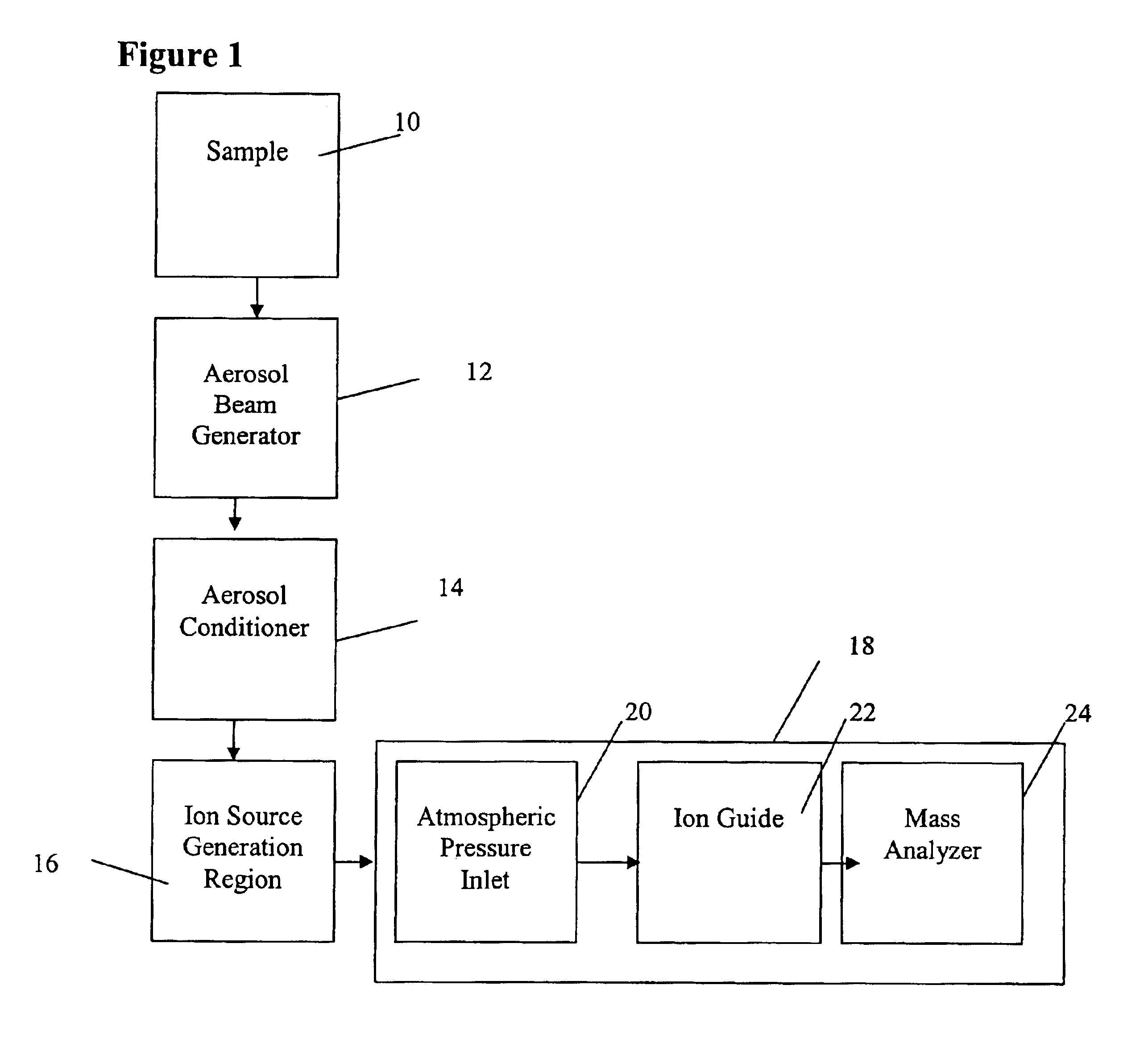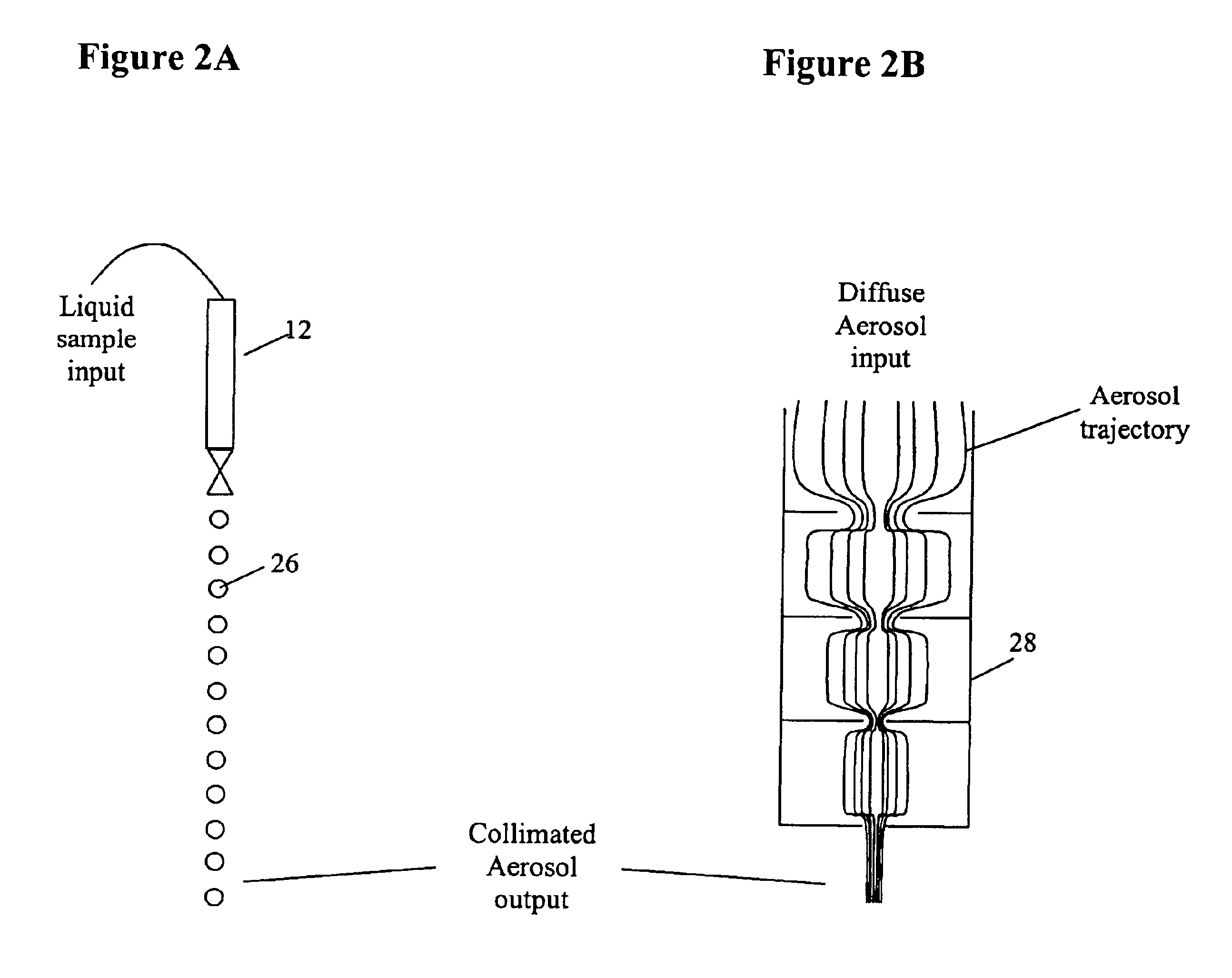Method and apparatus for mass spectrometry analysis of aerosol particles at atmospheric pressure
a mass spectrometry and aerosol particle technology, applied in the field of mass spectrometers, can solve the problems of not having an optimal matrix-to-analyte molar ratio, maldi analysis yielding little quantitative information about chemical concentration, and esi tending to output multiply charged ions which are difficult to interpret, so as to eliminate potential contamination and chemical reactions, and maximize analytical efficiency
- Summary
- Abstract
- Description
- Claims
- Application Information
AI Technical Summary
Benefits of technology
Problems solved by technology
Method used
Image
Examples
Embodiment Construction
[0041]Referring now to the drawings, wherein like reference numerals designate identical, or corresponding parts throughout the several views, and more particularly to FIG. 1 thereof, one of the preferred embodiments is shown in FIG. 1. The present invention involves introducing a sample 10 into an aerosol beam generator 12. The aerosol generator 12 produces an aerosol beam that is subsequently conditioned in an aerosol beam conditioner 14. The conditioned aerosol beam is then ionized in an ion source generation spatial volume 16, and subsequently introduced into a mass spectrometer 18 for mass analysis. The mass spectrometer 18 includes an atmospheric pressure inlet 20 as an ion entrance, an ion guide 22 to direct charged components, and a mass analyzer 24 where ions are separated and detected according to their mass-to-charge ratio. The atmospheric pressure inlet 20 operates with an input pressure at or near atmospheric pressures (e.g. 100-1000 Torr).
[0042]The aerosol formed in th...
PUM
 Login to View More
Login to View More Abstract
Description
Claims
Application Information
 Login to View More
Login to View More - R&D
- Intellectual Property
- Life Sciences
- Materials
- Tech Scout
- Unparalleled Data Quality
- Higher Quality Content
- 60% Fewer Hallucinations
Browse by: Latest US Patents, China's latest patents, Technical Efficacy Thesaurus, Application Domain, Technology Topic, Popular Technical Reports.
© 2025 PatSnap. All rights reserved.Legal|Privacy policy|Modern Slavery Act Transparency Statement|Sitemap|About US| Contact US: help@patsnap.com



